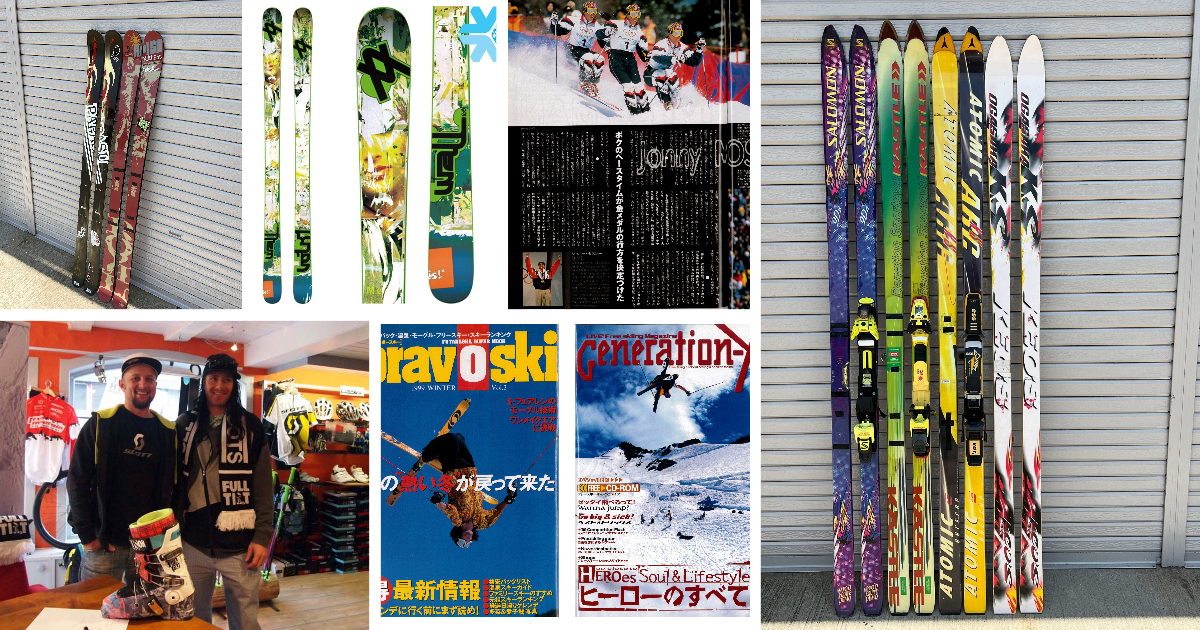A pro shop that is well-versed in ski products, carrying a variety of brands and offering opportunities for test rides. So, we asked a ``signboard owner'' who has been active in the freeski industry for many years to introduce his favorite ski gear and look back on the history of gear in the ski world and market trends to date. To mark the beginning of 2024, take a look at the story from before the dawn of freeskiing to 2023 in 5 minutes! Let's study quickly.
The explanation was provided by Toshiya Ikeda, owner of the pro shop “PAPASU”
A pro shop's concept, store layout, and product selection strongly reflect the professional owner's preferences and preferences. PAPASU, located in Hyogo Prefecture, is a unique professional skate shop with the concept of ``a shop that not only sells gear, but also conveys the joy of skiing.'' It's a shop. I asked the owner, Toshiya Ikeda.
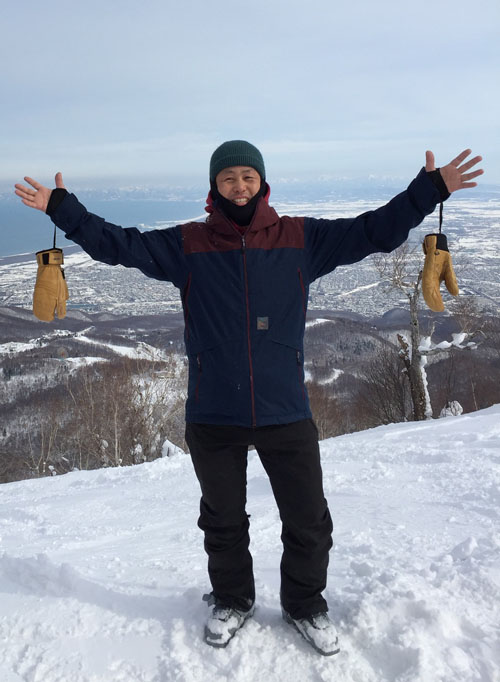
I started freeskiing in 1995, even though I was a basic skier. I watched the TV show ``SALOMON SKI NOW,'' which was popular at the time, and was fascinated by skiers jumping alongside famous demonstrators and making big sprays of powder.
The history of free ski gear introduced here is based on what I have observed in the industry while running a shop. I would like to take a look back at the flow from about 30 years ago, including my personal opinion.
1995
I've been skiing since I was in the third grade of elementary school, and the first thing I bought when I wanted to try it was SALOMON's demo ski 9100 EQUIOE DEMO 2S. After all, I admired him after watching the TV program “SKI NOW” back then. The appearance of skis with monocoque bodies (so-called cap skis) was a shock. Cap skis are common now, but back then they were still rare and had a new technological feel to them.
Around 1995, when cap skis came out, it was also around the time when snowboarding started to become popular. Basic skiers turned to carving skis, and those interested in freeskiing quickly turned to mogul skiing. At "SKI NOW", Mr. Kobayashi with a mohawk who is currently serving as a mogul coach for All Japan appeared, and as his name suggests, he was skating on a hump with his hair cut into a mohawk. However, Moguls were not yet available as specialized ski models, and they were called extreme skis.

1997-1998
Mogul competition, which can be said to be the ancestor of freeskiing, became popular in 1998, and Tae Satoya's gold medal win at the Nagano Olympics was a big deal. Soon, a mogul board came into the shop. In particular, the ski resorts in Kansai don't have as much snow as Hokkaido and northern areas, so it's easy to get bumps, and there were a lot of people skiing on the bumps. There are still many of them now. At that time, moguls were becoming popular, and I think it was a time when young people in their late 20s were choosing between moguls and snowboarding.
Around 1997, the mogul star was born, and signature skis from Jean-Luc Brassard and Edgar Grospiron were selling well. I was riding SALOMON's "FORCE9". DYNASTAR's "Assorted Superior" was a huge seller at the store. It's only in the western Japan area.
At the 1998 Nagano Olympics, Johnny Mosley, wearing K2s, won the gold medal by putting a 3D style air into his mogul air. I think that around this time, the category of freeskiing began to become popular in the world through the media.
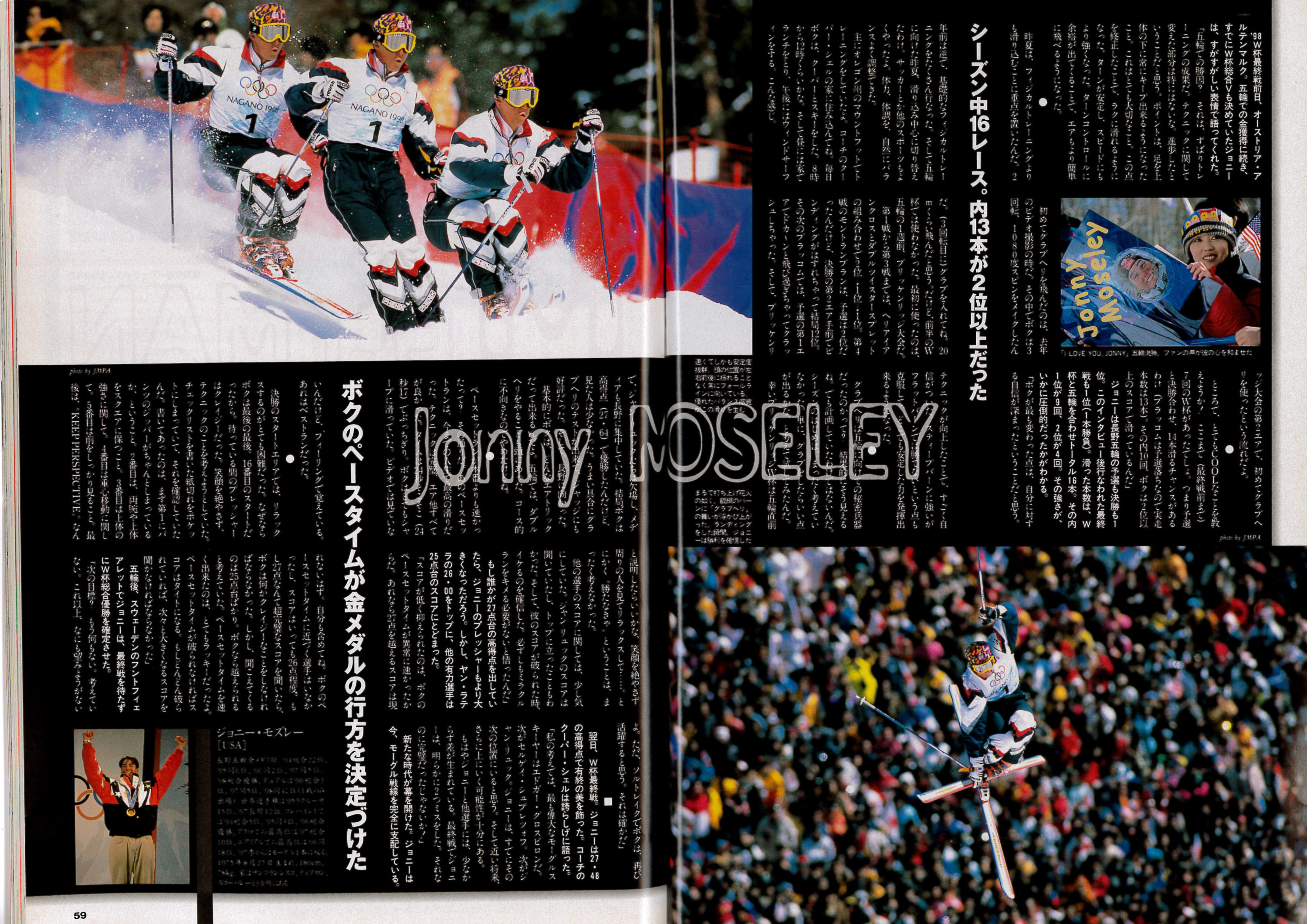
1999~2000
Around this time, SALOMON's twin tip ``TENEIGHTY'' was released. This ski is a symbol of the explosive period of the freeride movement, so-called New School skiing, where new styles such as air tricks were born. When "TENEIGHTY" came out, I thought, "What is this?" What am I going to do with this? My impression is that it's a bit of an old mogul ski. What?
But when I looked at magazines, I saw new styles of performances such as JP Au Claire flying and rotating in 3D, and I was shocked to find that it was just so cool. I think "TENEIGHTY" sold really well.
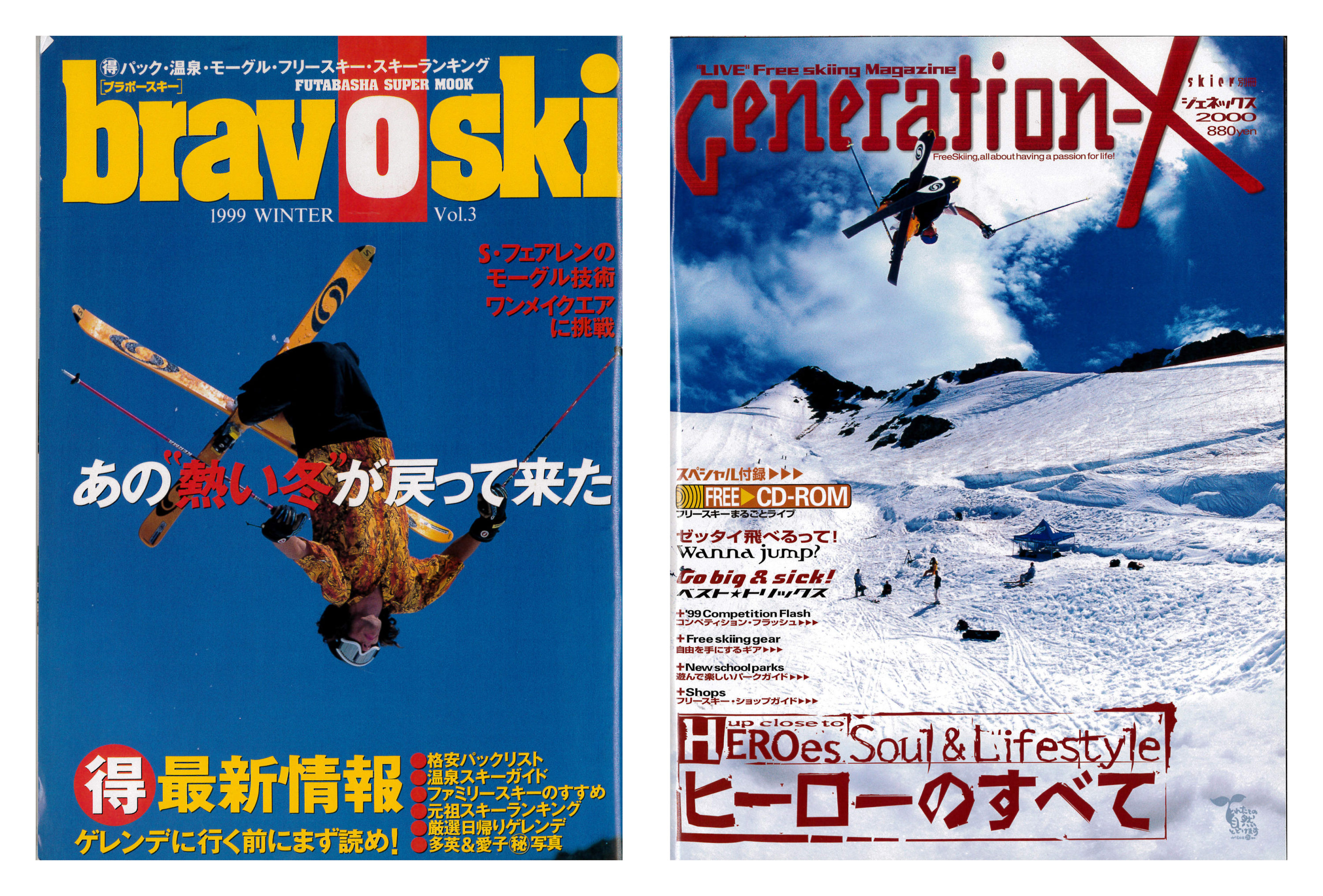
“TENEIGHTY” was a turning point. Then, with the addition of the carving style, I think it became established as more and more manufacturers came out with similar models. At that time, a global extreme sports competition called the Winter X-Games began, and the sport of ski cross was also born. At the same time, in terms of impact, SALOMON released "Snowbrade" around this time. It is a short ski of about 100 cm that was called a fun ski ski board. It was also popular in Japan.
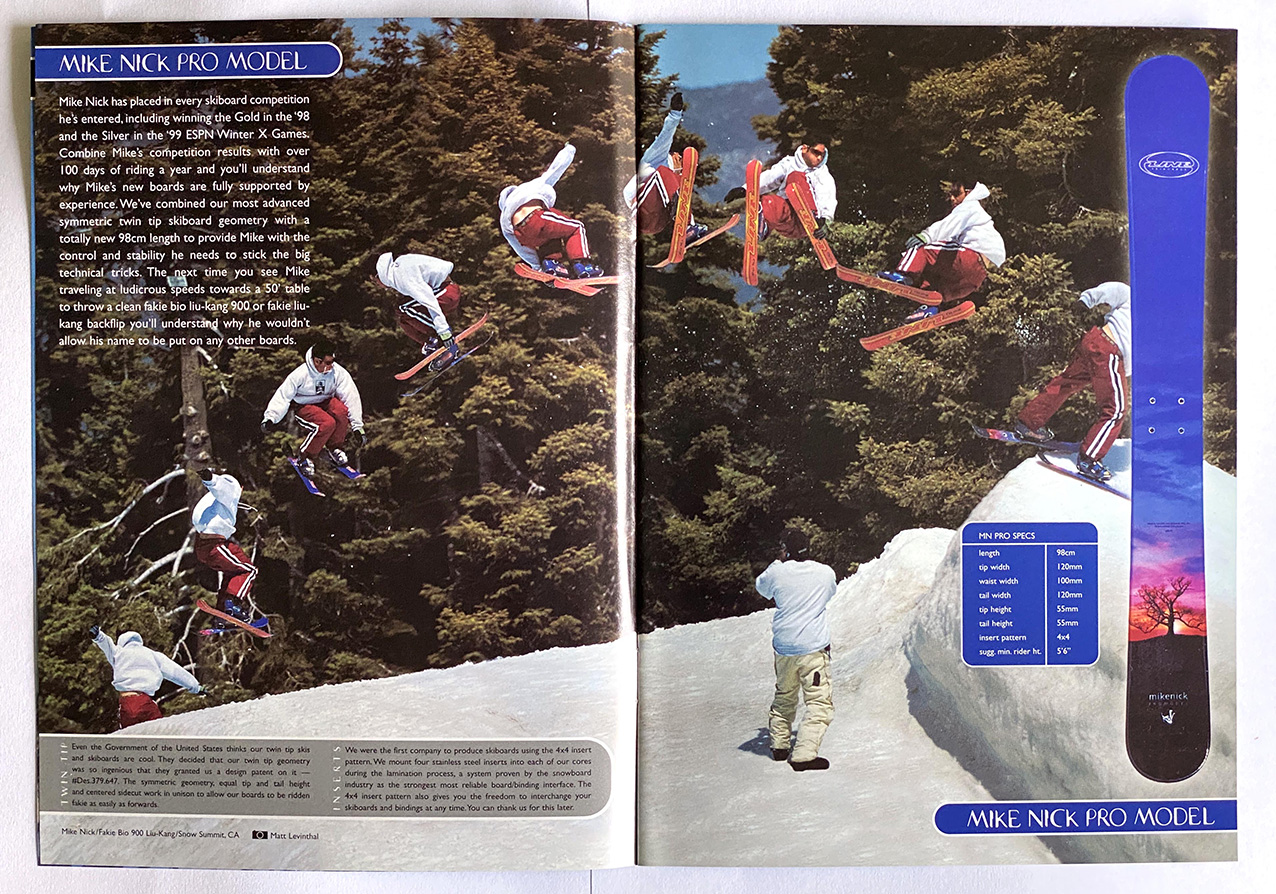
Bringing the feel and style of inline skating and street riding, riding without poles. Rubbing the rail or slipping on the jib. Overseas, people like LINE's Mike Nick were in the spotlight, and I think this was the era when the way we enjoyed skiing changed.
2001-2003
This was the time when garage brands and riders' brands started to become popular. ARMADA, 4FRNT, and domestic brands such as VectorGlide and Reism. I think the first twin tip I bought for myself back then was a board called DYNASTAR's ``CONCEPT.'' Although it was a model whose tail didn't rise that high yet, it was also the first ski I chose to ride on the rail as a free ski.
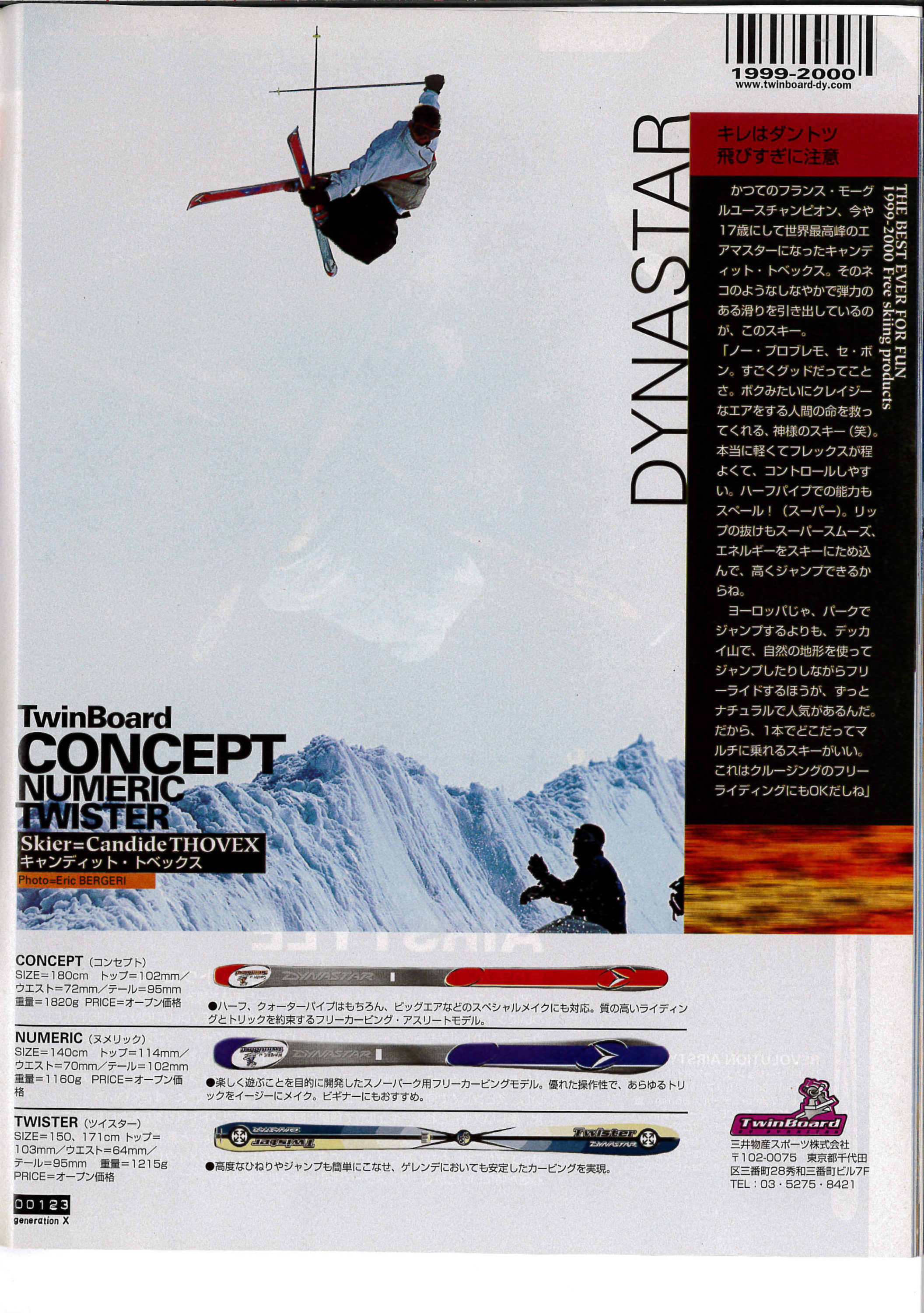
At that time, even though it was called a twin tip, the tail was not as high as it is now, and I think there were many models with a center width of 70 to 80. Around that time, K2's "Silencer" probably started coming out. Personally, I joined Rossignol (then Mitsui & Co. Sports) around that time, so from then on, the skis I rode were always Rossignol.
Around that time, ROSSIGNOL introduced a board called "BANDIT," which allowed you to not only fly and jib on the slopes, but also go into the sidecountry and backcountry. It was really good skiing. ROSSIGNOL rider Atsushi Yamada also used it, and it looked cool.

Around this time, I think it became clear that the shape of a ski changes depending on how you enjoy skiing. Around 2000 or so. I think it was around this time that the shape of skis began to be decided upon in response to diversification, with people saying, ``This is for this purpose'' and ``Let's use it like this.''
2004~2005
Around this time, park skiing became popular, and the thickness of the boards began to come in various sizes.
It was probably around 2004 or 2005 that slopestyle and halfpipe became competitive. Halfpipe was included in the World Championships in 2005. It has become possible to not only enjoy skating, but also to aim for it as a competition, and competition-spec models have started to emerge. I think it was around this time that a new style of skiing called freeskiing was established. I also think that the purpose of gear has become clearer. It's like, ``It's become clear what I can do.The specifications of the board are like this to do this.'' By the way, I was on DYNASTAR's board called "Trouble Maker" (left in the photo below). It had a good balance of slightly thicker shape and lightness and softness! ”

Around this time, walk mode boots and tech bindings came out. This is an indication of the direction of freestyle in big mountains and backcountry. Riders who used to do airs and jibs in the park gradually turned to freeride, including tricks, in the backcountry. Freeskiing, which started with an emphasis on free style and a new ski culture, has entered the framework of FIS competitions, but now I want to go into the fields of nature and into the deep mountains in search of even more freedom. became. ...Maybe there was a mindset like that.
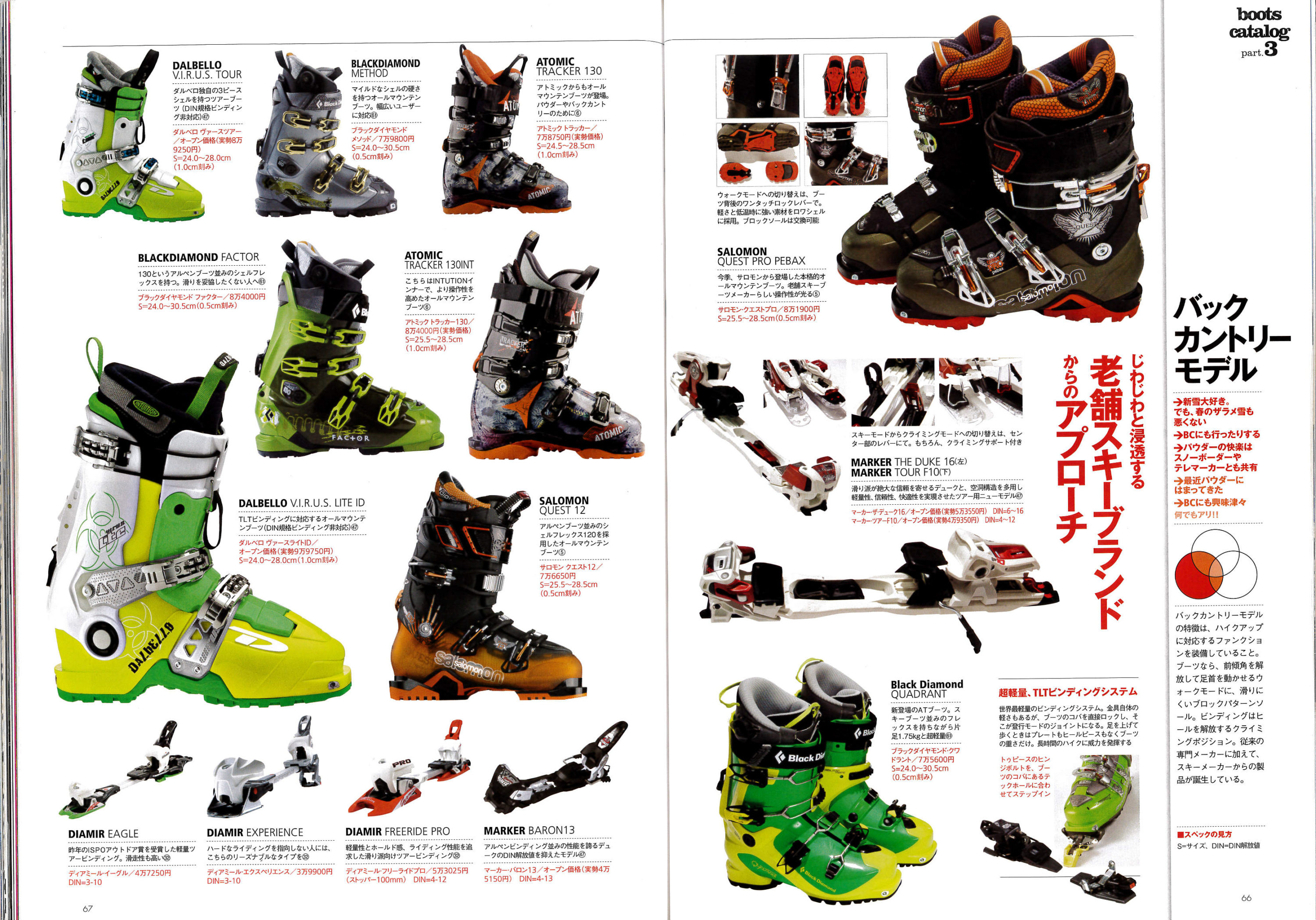
MARKER's binding "THE DUKE 16" is now available as a tour model
I think boots went through an interesting turning point. Rykel has been rebranded as FT. That was the starting point, and from there the presence of boots in freestyle increased, and interest and awareness of boots began to increase and become widespread. Seth Morrison's signature flashy patterned FT boots, as well as the red and white boots worn by Tom Wallish. I guess it was around this time that boots became sneaker-like, cool, and fashionable. This was a shock. I wonder why they chose such a graphic on the boots? That's it. I guess this meaninglessness was what made it cool. I think it was around this time that skiing as a whole started to become fashionable and cool.
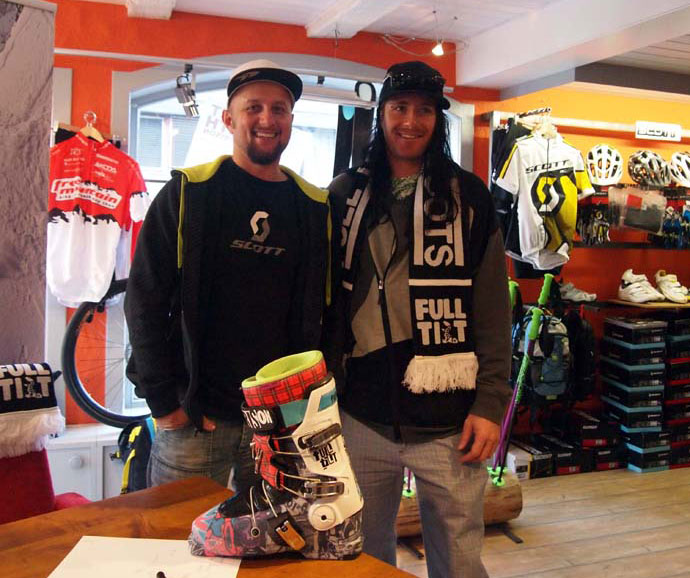
In 2004, I opened the pro shop PAPASU, and at the time of opening, I met Nobuhiko Tamaki (a specialist in jib freeskiing) and started to feel that freeskiing was really fun again, and my passion for skiing was rekindled. I did. People thought, ``Skiing is really fun!'' and as I began to use that sense of excitement to convey the fun to customers, my products gradually became more and more focused on free skiing. I myself also rode the limited edition model ``ROYAL'' from Reism. The shape is not too thick, making it a versatile ski that can be used from the slopes to the park. I had a lot of fun skiing with Nobuhiko Tamaki, so that had a big influence on me.
Around 2007, the introduction of Marker's Royal Series was impressive. Jester and Grifon. With the advent of freestyle bindings, I was able to choose my binding, and as soon as I laid down the binding spring, I felt like, ``This is new!'' It was very innovative.
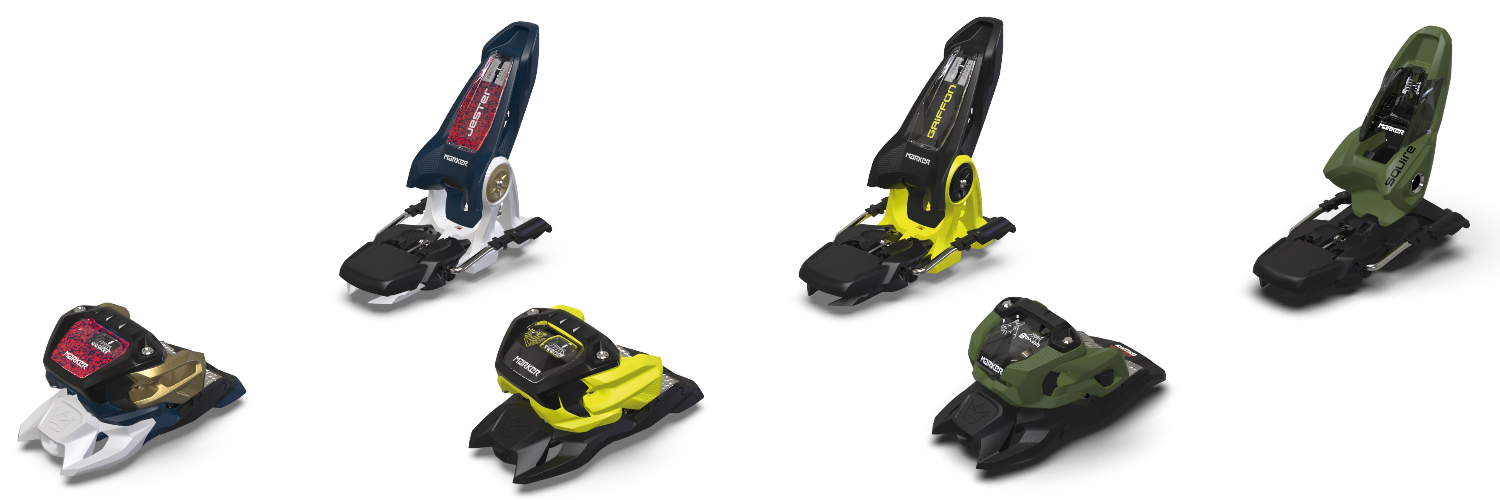
2008-2011
Since then, freeski models have been sold by many manufacturers. I think it was around 2008. VOLKL came out with a ski called ``WALL,'' and I remember it selling very well.
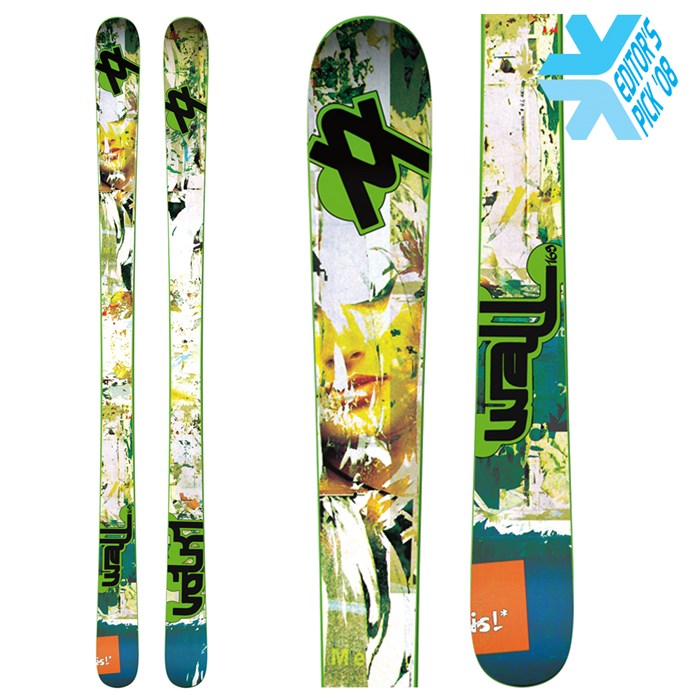
ARMADA came in around 2010. It was also around this time that ARMADA was introduced and rocker skis started appearing. There were a lot of changes around this time, such as long noses, flat bends, and full rockers. Things that are common now were created around 2008, 2009, and 2010.
▼Video of Tanner Hall, who founded ARMADA with JP Auclair and others and helped it grow rapidly.
ARMADA also didn't sell very well in its first year, but its sales exploded from the second year onwards. It was from 2010 to 2011 that my locker started to get tighter. The reason behind this was that it focused on tricks, and when it came to powder, the top and tail did not sink easily and attracted attention for its buoyancy. The solid rocker shape also attracted attention.
ARMAMDA's JJ has a long nose, a rocker camber ski, and a firm side cut, so I think it created a new shape as a powder ski that can be skied on the slopes. I think JJ's appearance was a big deal for the freeski world. I also think that Tanner Hall and the LINE riders had a very strong influence at the time.
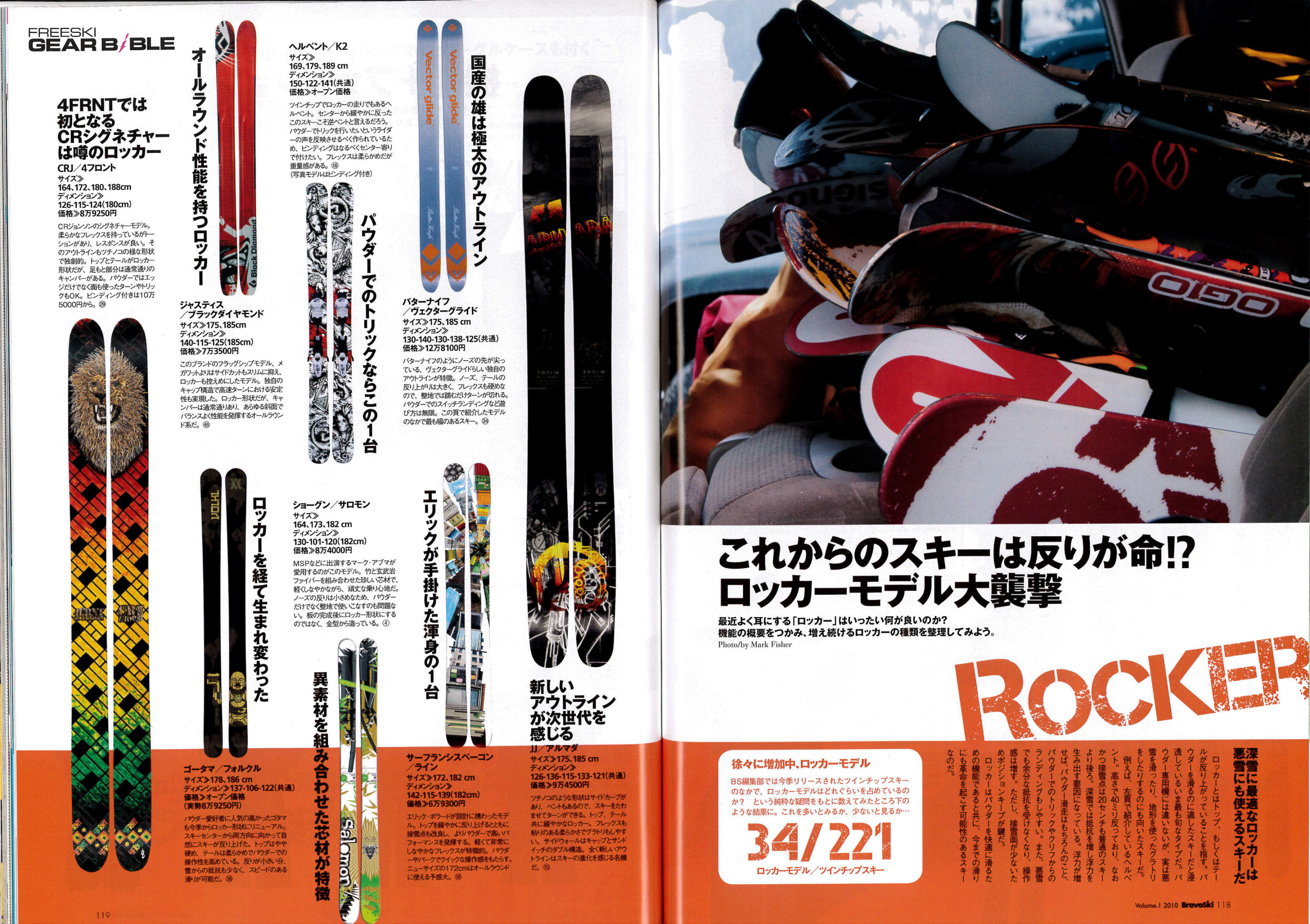
2015-2020
``In 2015, 4FRNT GAUCHO was released in 2020 with LINE's ``BLEND'' with a center of 100mm, but at first it was not a backcountry ski, but I thought it would be impossible to ski with a center of 100mm. of? That was my impression, but I think it was the power of BLEND and GAUCHO that changed my impression to the idea that I could ski with a center distance of 100mm even on the slopes. If you are a basic skier who wears skis with a center of 60mm, can you wear skis with a center of 100? That's what I thought, but you successfully overturned my thoughts about center width, saying, ``Thick boards are fun!''
I think the arrival of the binding "KINGPIN" in 2017 was a big deal.
At the same time, walk-mode boots were introduced, and I think the innovations in bindings have further diversified the ways to enjoy skiing. ``KINGPIN'', ``DUKE'', ``Baron''... Then, skis were needed to enjoy those bindings and boots.
▼Marker “KINGPIN” explanation video
2020-2023
The trend in recent years is that lighter core materials have emerged, making all boards much lighter and more flexible, making them easier to handle and slip on. Some skis contain titanium or carbon to increase their rigidity and provide better glide. I think this makes it easier to choose a board that matches each skier.
In terms of specs, in recent years, perhaps due to the popularity of powder freeride, the number of skis with waist widths of 90mm or more has increased dramatically, and there are many skis with waist widths of around 100mm. The number of models that are fat yet easy to slide on compacted snow slopes is increasing, and multi-purpose all-mountain skis that can handle both powder and grooming slope carving are becoming popular. Personally, I've been riding a model like the one below for the past year or two.

Left) ROSSIGNOL | BLACKOPS98 (2022) Reason for purchase: The best shape in my opinion for a ski that can be used on slopes, parks, and even side country! It's also nice that it's made of metal so you can slide smoothly!
Center) ROSSIGNOL | BLACKOPS92 (2023) Reason for purchase: I wanted a slightly narrower ski for ski slopes and side country. This ski has nose rocker and is easy to use in all conditions, from flat snow to bad snow to spring snow!
Right) ROSSIGNOL|SUPERVIRAGE Ⅵ LTD (2023) Reason for purchase: Good glide and maneuverability! The feeling of the ski moving smoothly is very good!
summary
I think the term freeskiing is still very vague. I think backcountry, sidecountry, freeride, parkride, mogul, etc. can all fit under the term freeski, but I think it would be easier to understand if they were more clearly defined.
Among these, I think we are beginning to see some answers regarding park skiing. If you're looking for a sturdy ski with a camber of 85-95mm center width, and something that's easy to understand, I'd recommend Völkl's REVOLT 84/90 or ARMADA's ARV 88/94.


In addition to snow parks, I think new styles such as guratori and ollie-nollie, which allow you to enjoy the flexibility of the board, are emerging. The recommended models for this style are LINE's ``BLEND'' and ``HONEY BADGER.''


In terms of the market, I feel that free rides are becoming more popular than park rides in recent years. I think there are differences in temperature depending on background such as regional characteristics and the age of the person skating.
Freeride is now becoming a movement for people who love skiing and have been skiing for a long time, and as they get older and a little older, they enjoy the leisurely act of skiing and discover the fun of nature and the mountains as a whole. I think it's happening.
I think it will become even bigger in the future. Even basic skiers can enjoy freeride on the slopes. I guess you could call it carving freeskiing. For example, we recommend ARMADA's "Diclivity" and K2's "Mindbender."


Nowadays, not only twin-tip skis are used on the slopes, but also skis with rocker only at the top are becoming more common. Recently, the number of skis that allow you to enjoy both the slopes and the side country has been increasing, and I think that number will increase in the future. Nowadays, the ways of enjoying things are diversifying, not just in categories such as basics, parks, and backcountry, and this diversity is becoming established. On top of that, there are countless types of ski gear.
If you're having trouble choosing ski gear, why not visit a ski pro shop? Please feel free to talk to the owner who is particular about his or her needs. I'm sure you'll hear a lot of interesting stories.
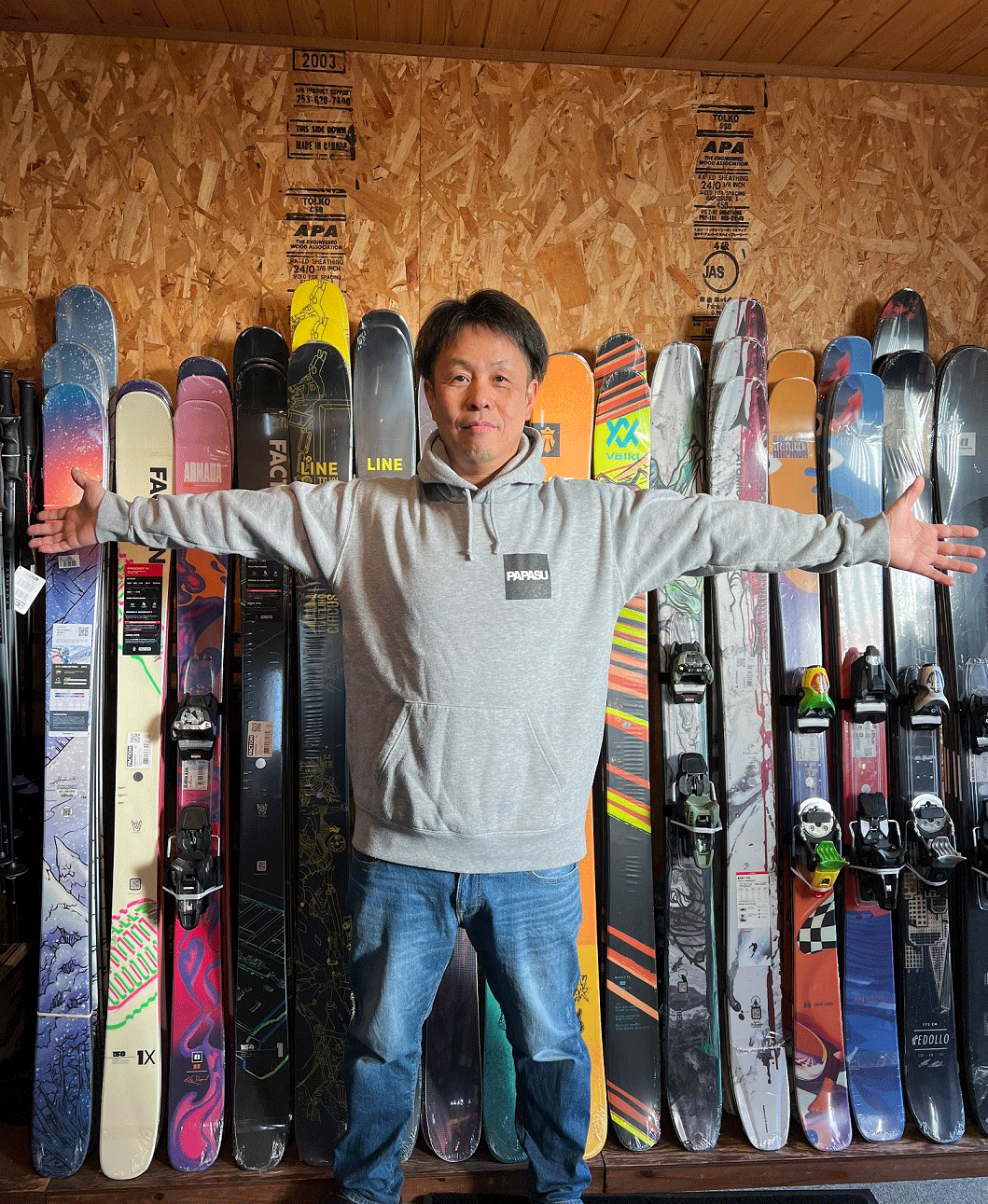
PAPASU owner
Toshiya Ikeda
He started skiing when he was young, and after graduating from university, he worked at a ski shop and manufacturer and opened ``PAPASU''. This year marks the 18th anniversary.
“My life is now skiing (lol).” Inline skating, which he started doing off-ski training, led him to start freeskiing, and in 2004 he opened PAPASU, a shop with an indoor park. Based on the concept of ``skiing is fun!'', we aim to be a shop where you can not only learn about products, but also provide information and techniques, as well as make friends.
PAPASU Information
| address | 1-21 Yaguracho, Shikama Ward, Himeji City, Hyogo Prefecture |
| phone number | 079-237-9037 |
| Business day | (Business) 12:00-21:00 / (Closed) Tuesday |
| Web | http://shop-papasu.com/ |
| SNS | ・Facebook・Instagram・Twitter |

